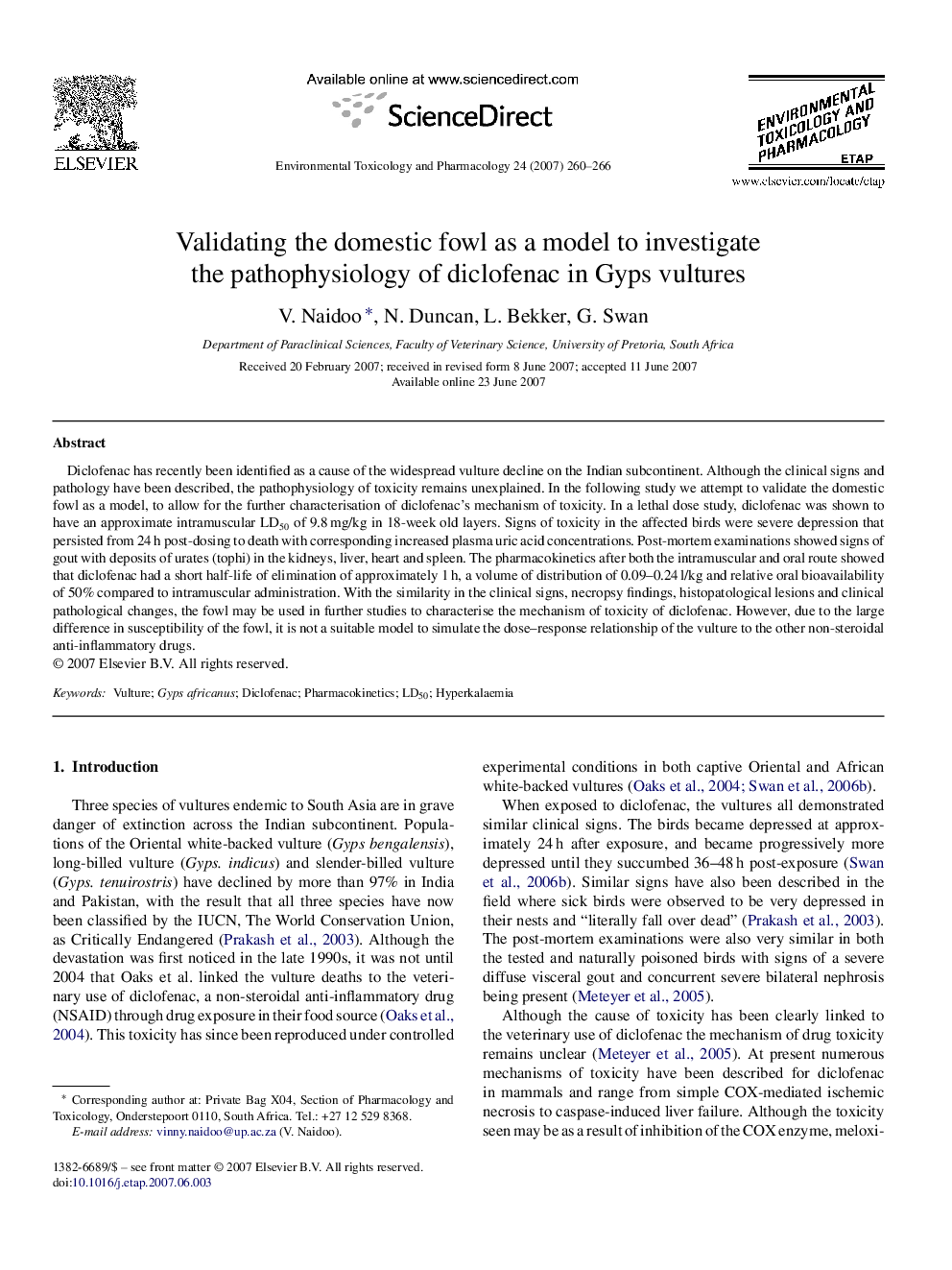| کد مقاله | کد نشریه | سال انتشار | مقاله انگلیسی | نسخه تمام متن |
|---|---|---|---|---|
| 2584479 | 1130741 | 2007 | 7 صفحه PDF | دانلود رایگان |

Diclofenac has recently been identified as a cause of the widespread vulture decline on the Indian subcontinent. Although the clinical signs and pathology have been described, the pathophysiology of toxicity remains unexplained. In the following study we attempt to validate the domestic fowl as a model, to allow for the further characterisation of diclofenac's mechanism of toxicity. In a lethal dose study, diclofenac was shown to have an approximate intramuscular LD50 of 9.8 mg/kg in 18-week old layers. Signs of toxicity in the affected birds were severe depression that persisted from 24 h post-dosing to death with corresponding increased plasma uric acid concentrations. Post-mortem examinations showed signs of gout with deposits of urates (tophi) in the kidneys, liver, heart and spleen. The pharmacokinetics after both the intramuscular and oral route showed that diclofenac had a short half-life of elimination of approximately 1 h, a volume of distribution of 0.09–0.24 l/kg and relative oral bioavailability of 50% compared to intramuscular administration. With the similarity in the clinical signs, necropsy findings, histopatological lesions and clinical pathological changes, the fowl may be used in further studies to characterise the mechanism of toxicity of diclofenac. However, due to the large difference in susceptibility of the fowl, it is not a suitable model to simulate the dose–response relationship of the vulture to the other non-steroidal anti-inflammatory drugs.
Journal: Environmental Toxicology and Pharmacology - Volume 24, Issue 3, November 2007, Pages 260–266